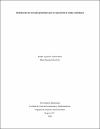Identificación de mercados potenciales para la exportación de sandía colombiana
Resumen
El objetivo del proyecto se orienta a la identificación de las oportunidades comerciales que tiene la sandía colombiana en el mercado internacional. El desarrollo del anterior proceso se dividió en tres etapas que permitieron el cumplimiento del principal objetivo. Como primera medida se llevó a cabo el análisis macro y micro del sector, subsector y producto, donde se observó detalladamente la producción con sus ventajas y desventajas, así mismo el consumo y el crecimiento, con el fin de conocer su capacidad productiva. En segunda instancia, se logró elegir el mercado potencial internacional más viable y con mejores condiciones para la exportación de sandía colombiana, teniendo en cuenta las variables de poder adquisitivo per cápita, índice de precios de importación, acuerdos comerciales y normatividad, población y cercanía geográfica de 4 países, donde gracias al modelo implementado Way Station y la matriz de ponderación aplicada, se comparó y determinó a Canadá como mejor opción para el proceso de exportación. Por último, se establecieron dos estrategias de penetración al mercado, la primera estrategia la distribución selectiva y la segunda el “pull” ya que la sandía debido a su publicidad y por ser una fruta exótica, hace que la población canadiense en su mayoría demande el producto, lo que conlleva a los distribuidores y minoristas a comprar el producto colombiano.
Abstract
The objective of the project is aimed at identifying the commercial opportunities that Colombian watermelon has in the international market. The development of the previous process was divided into three stages that allowed the fulfillment of the main objective. As a first measure, the macro and micro analysis of the sector, subsector and product was carried out, where production with its advantages and disadvantages, as well as consumption and growth, were observed in detail, in order to know its productive capacity. In the second instance, it was possible to choose the most viable international potential market and with the best conditions for the export of Colombian watermelon, taking into account the variables of purchasing power per capita, import price index, trade agreements and regulations, population and geographic proximity from 4 countries, where thanks to the implemented Way Station model and the applied weighting matrix, Canada was compared and determined as the best option for the export process. Finally, two market penetration strategies were established, the first selective distribution strategy and the second the "pull" strategy, since watermelon, due to its publicity and because it is an exotic fruit, makes the Canadian population demand the product, which leads distributors and retailers to buy the Colombian product.
Palabras clave
Collections
 This work is licensed under a Creative Commons Reconocimiento-NoComercial 4.0.
This work is licensed under a Creative Commons Reconocimiento-NoComercial 4.0.

